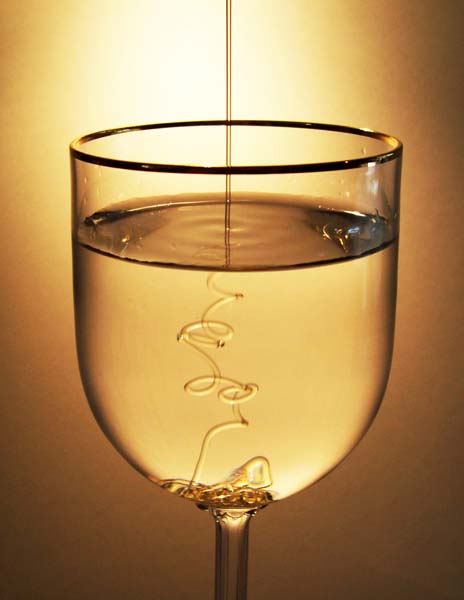
Scientists have also tried to find out why water ALWAYS
spills when you pour water from a tea kettle to a cup. They
first believed that adhesion was the cause of this problem, since
certain molecules adhere to each other. One scientist coated
the spout with paraffin wax, yet the tea still spilled. They
also placed a flask in salt water and injected it with fresh water
under the bottom of the flask. Since fresh water is less
dense it flows upwards in salt water. The water still clung
to the side of the flask. No matter what experiment they
tried, the water still clung to the side of the tea pot, and it
didn't have to do with the adhesive properties of the individual
properties. This physics dilemma is still up in the air, so
the Teapot Effect remains unsolved.
Gravity and Pouring from a
Tea Kettle
Have you ever watched honey slowly spiral
down to the bottom of a tea cup and wondered why? Well NASA
completed a study on why gravity makes dense fluids sink to the
bottom and why lighter fluids rise to the top. The
scientists expected two different fluids in a container to have
strange and complicated currents to flow. When there are tiny
differences in fluid composition or temperature, in theory, it can
induce stresses that cause convection. Scientists call this
the Korteweg stress, and while it can not be observed on earth,
you can see it in space where gravity has no effect. John
Pojman created an experiment called Miscible Fluids in
Microgravity. Astronauts squirted honey from a syringe into
water to try and find the square gradient parameter, or k.
They found the upper limit of "k" to be 10EE-8 Newtons. How
two fluids behave when mixed in low-gravity depends on this value
k. When the honey was squirted into the water, they stayed
elongated and did not mix. This allowed Pojman to declare
the upper limit of k as 10EE-8 Newtons.



